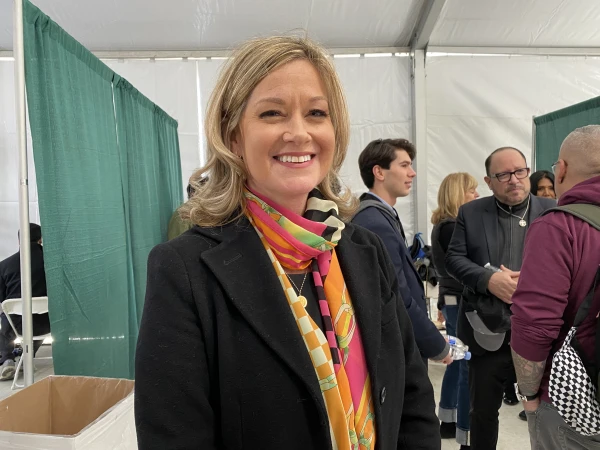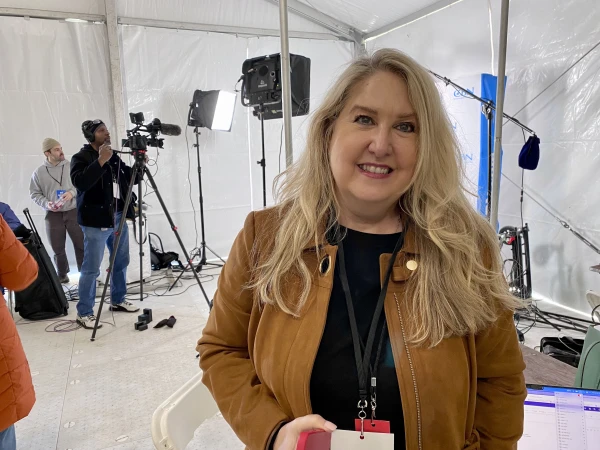Washington D.C., Jan 22, 2023 / 10:40 am
Kristi Hamrick remembers the day 50 years ago when Roe v. Wade became the law of the land.
One of her enduring memories is how her father, a minister, reacted to the news.
“I probably saw him cry two or three times in his life,” she said. “The day that Roe happened was one of them.”
Her father fought the U.S. Supreme Court’s decision on Jan. 22, 1973, from the start, and Hamrick followed in his footsteps.
As the chief media and policy strategist for Students for Life of America, a leading pro-life advocacy organization, she attended last week’s March for Life in Washington, D.C. And like other longtime marchers, she was reminded of those early years in the wake of the court’s landmark abortion ruling when many in the pro-life movement feared they might not live to see Roe overturned.
But this year — at the 50th annual march — that longed-for outcome was finally a reality.
Tom and Mindy Edwards, of Sandusky, Ohio, attended their first March for Life in 1976.
“They’ve all been great. There’s always been a tremendous amount of people. You can never tell how many there are,” Tom, 70, told CNA. “It’s just beautiful in that way.”
“It’s nice for us to see all the young people. It just gives us a lot of hope,” added Mindy, 68.
This year, the couple traveled on a packed bus with the respect life ministry of Immaculate Conception Catholic Church in Port Clinton. For them, they said, the life issue is a personal one.
“We lost a baby 33 years ago, and that brought me into the pro-life movement,” Mindy revealed. “My husband and his family has always been in the pro-life movement since even before Roe v. Wade. And they really inspired me.”
Later on, the couple adopted a daughter with special needs. And so, when Casey Gunning, who has Down syndrome, spoke at the 2023 march, Mindy said they were left teary-eyed.
As the movement moves forward, Tom encouraged pro-life Americans to talk about the reality of abortion.
“We have to say what it is,” he said. “It’s the killing of an unborn child … It’s the killing of a child.”

Jeanne Mancini, president of the March for Life, revealed that she didn’t expect to see Roe overturned in her lifetime — that is, until she read the main brief and listened to the oral arguments for Dobbs v. Jackson Women’s Health Organization, the Mississippi abortion case that ultimately reversed Roe.
(Story continues below)
She was sitting in her office in Washington when the news of the decision broke on June 24, 2022.
“I was overcome with peace and gratitude for all of the marchers who marched over the years because, I think, it was in large part the witness to the inherent dignity of the unborn child that Roe got overturned.”
Chuck Donovan, who serves on the board of the March for Life and is president of the Charlotte Lozier Institute, the research arm of Susan B. Anthony Pro-Life America, said he attended his first march in 1979.
Over the years, he said that the “personality of the movement changed.”
“Initially, the march was an opportunity to highlight the Supreme Court decision, to protest it,” he recalled, with the typical march having a more “funereal aspect to it,” reflecting the lives lost to abortion.
In the last decade or so, he said, he noticed a change.
“It got increasingly young — that grew — it became celebratory and optimistic,” he said. “I didn’t know whether technically we were winning, but the march began to feel like we were.”
He shared one march memory — of the first president to wave at pro-life marchers.
March for Life founder Nellie Gray repeatedly tried to convince President Ronald Reagan to speak at the march, he said. At the time, Donovan worked at the White House and stressed Reagan “would have loved to do that.” Reagan’s team, however, was worried about his safety after the assassination attempt in 1981.
But Gray was tenacious. She met with the president the morning of march and told him, “You’ve got to come today,” Donovan remembered. Reagan was reluctant, but Gray managed to persuade him to wave to the marchers from the White House’s Truman balcony.

Kristi Hamrick, for her part, did believe she’d live to witness Roe’s demise.
It was always clear to her that abortion wasn’t in the U.S. Constitution, she said, but she also believes the evolution of the pro-life movement was a critical factor.
“We have lawyers, we have doctors, we have people focusing on service for women. We have people who are post-abortive who tell their stories. We have people who survived rape and rejected abortion, we have people conceived in rape,” she said. “And we didn’t have that when Roe happened. We made that.”
When Roe was overturned, she said she was on a Zoom call with her team and FaceTiming with people at the court. “I’ll never forget it,” she said.
“This huge evil is no more, and now we pick up our cross and keep going to the next thing. And, yes, it’s the 50 states ... but I am so excited,” she said.
“The Supreme Court was a roadblock. And now we can go anywhere we want.”






